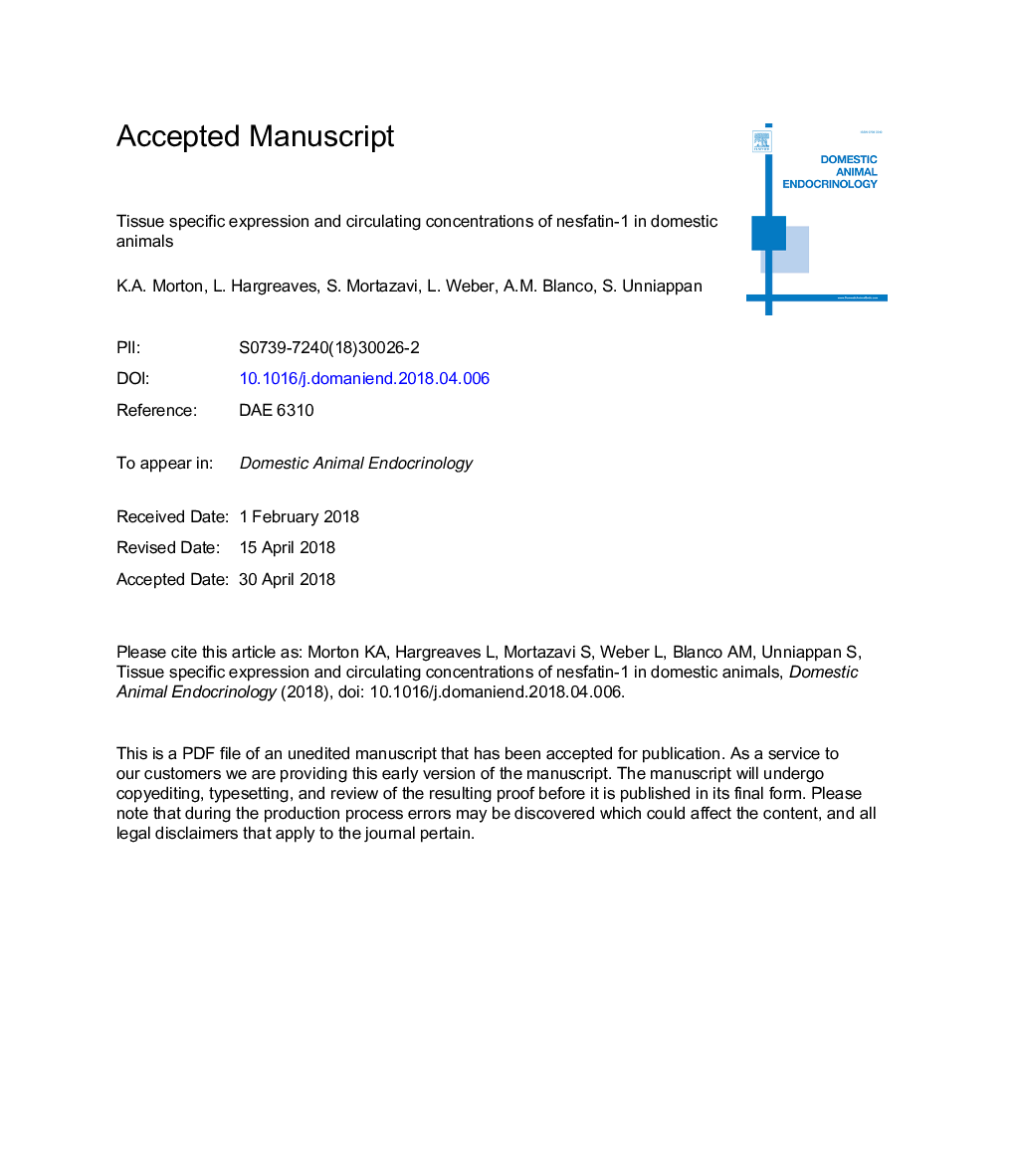| Article ID | Journal | Published Year | Pages | File Type |
|---|---|---|---|---|
| 8481857 | Domestic Animal Endocrinology | 2018 | 33 Pages |
Abstract
Nesfatin-1 is a naturally occurring 82-amino acid protein encoded in the precursor nucleobindin-2 (NUCB2) and has been implicated in multiple physiological functions, including food intake and blood glucose regulation. This study aimed to characterize nesfatin-1 in domestic species, especially cats (Felis catus), dogs (Canis lupus familiaris), and pigs (Sus scrofa). Our in silico analysis demonstrated that the NUCB2/nesfatin-1 amino acid sequence, especially the bioactive core region of the peptide, is very highly conserved (more than 90% identity) in domestic animals. Expression of mRNAs encoding NUCB2/nesfatin-1 was detected in the cat, dog, and pig stomach and pancreas. Immunohistochemistry revealed the presence of nesfatin-1 in the gastric mucosa of the stomach of dogs, cats, and pigs, and in the pancreatic islet β-cells of dogs and pigs. No nesfatin-1 immunoreactivity was found in the cat pancreas. Nesfatin-1 was detected in the serum of dog, cat, pig, bison, cow, horse, sheep, and chicken. Circulating nesfatin-1 in male and female dogs remained unchanged at 60 min after glucose administration, suggesting a lack of meal responsiveness in nesfatin-1 secretion in this species. The presence of nesfatin-1 in the gastric and endocrine pancreatic tissues suggests possible roles for this peptide in the metabolism of domestic animals. Future research should focus on elucidating the species-specific functions and mechanisms of action of nesfatin-1 in health and disease of domestic animals.
Related Topics
Life Sciences
Agricultural and Biological Sciences
Animal Science and Zoology
Authors
K.A. Morton, L. Hargreaves, S. Mortazavi, L.P. Weber, A.M. Blanco, S. Unniappan,
